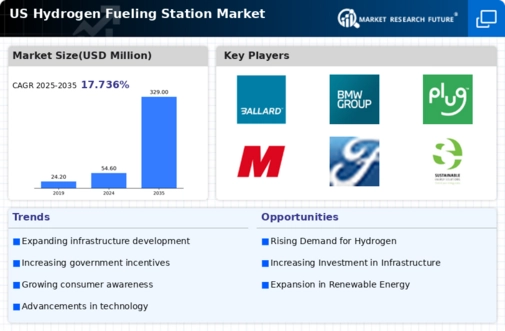US Hydrogen Fueling Station Market Summary
The US Hydrogen Fueling Station market is projected to experience substantial growth from 54.6 million USD in 2024 to 329 million USD by 2035.
Key Market Trends & Highlights
US Hydrogen Fueling Station Key Trends and Highlights
- The market is expected to grow at a compound annual growth rate (CAGR) of 17.74 percent from 2025 to 2035.
- By 2035, the market valuation is anticipated to reach 329 million USD, indicating a robust expansion.
- In 2024, the market is valued at 54.6 million USD, reflecting the initial stages of growth in hydrogen fueling infrastructure.
- Growing adoption of hydrogen fuel technology due to increasing environmental regulations is a major market driver.
Market Size & Forecast
| 2024 Market Size | 54.6 (USD Million) |
| 2035 Market Size | 329 (USD Million) |
| CAGR (2025-2035) | 17.74% |
Major Players
Toyota Motor Corporation, Ballard Power Systems, Air Products and Chemicals, Linde plc, BMW Group, Nel ASA, Plug Power, Honda Motor Co, Ford Motor Company, Sustainable Energy Solutions, Nikola Corporation, Hindustan Petroleum Corporation Limited, General Motors, Hydrogenics Corporation, Shell Hydrogen


















